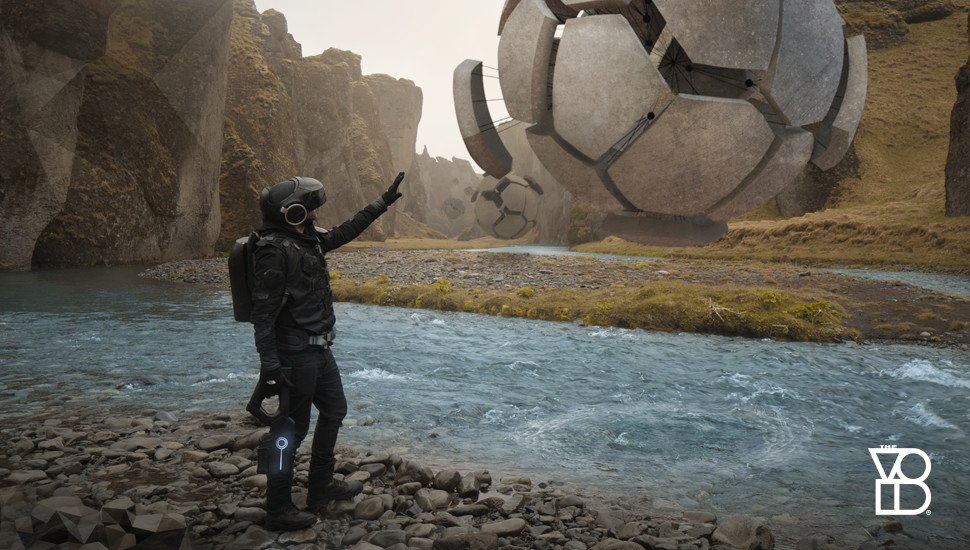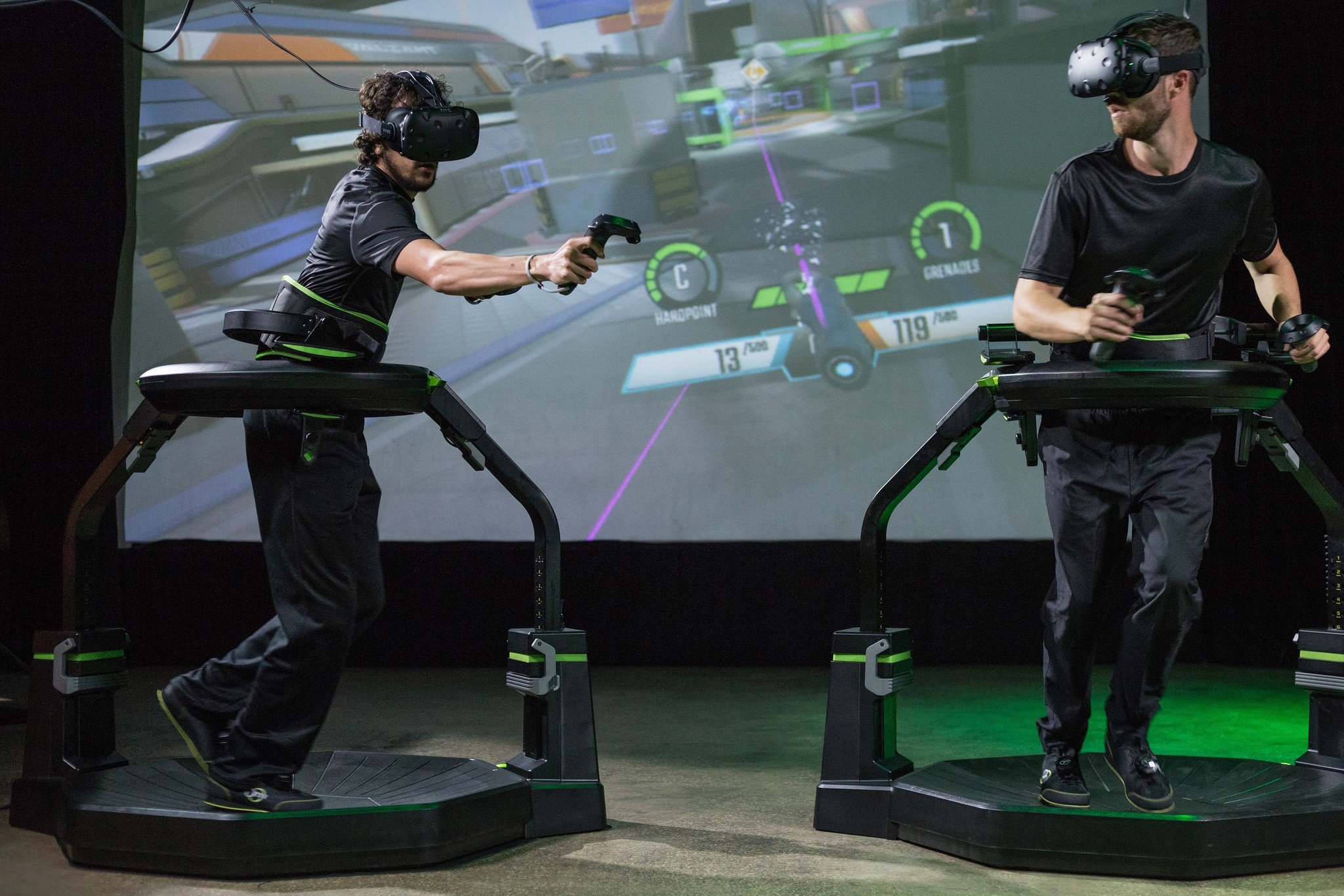How close are we to the technology of Ready Player One?
Welcome to the O.A.S.I.S. Ready Player One.


With the award-winning Ready Player One book about to be released as a Steven Spielberg movie, now seemed like a good time to look at the science behind the O.A.S.I.S. and whether our current technology is even close to replicating the wonders of this story. Let's take a look at individual technologies that comprise Ernie Cline's vision, as well as taking a close up look at the software that powers the O.A.S.I.S. and the many planets and people that live, work and play in its digital universe.
Hardware
A lot of the hardware that Wade Watts, the protagonist, uses seems to be within the reach of this decade. From Haptic gloves to 360 treadmills, there a lot of start-ups working to bring these technologies to life.
The O.A.S.I.S. Computer
I grabbed my OASIS console, a flat black rectangle about the size of a paperback book.
The OASIS Computer in the book is a seriously powerful piece of hardware. Capable of storing every movie, book, and video game ever made and running the powerful OASIS program, this isn't your average computer — it's far more powerful and compact that any contemporary console or PC.
The only thing that is close to the size of the OASIS console is the Shield TV by NVIDIA, a slim Android TV box that uses Nvidia's impressive system-on-a-Chip (SoC) technology to play some pretty great games at high speed and high resolution. What hardware is powering the OASIS console is left up in the air, though there's no mention of the noisy fans that are required to cool a modern PC with only a fraction of the capability.
Now the Shield is certainly not powerful enough to run the OASIS software unless most of the heavy lifting is done by the OASIS servers, though that is certainly a possibility. It also can't store all that media, though every year we're able to store more and more data in a smaller space, so housing all that media may not be so difficult in the coming years.
Our own Daniel Rubino did try out a portable VR rig a little while ago and while it was certainly powerful enough to run any VR you would need right now, it was a full PC strapped to his back, with all the bulk that would entail, The vision of the slim OASIS console from the book is a different beast.
All the latest news, reviews, and guides for Windows and Xbox diehards.
The OASIS Visor
It fit snugly around my eyes like a pair of swimmer's goggles, blocking out all external light.
Before starting to write this article I thought the Visor was going to be one of the biggest hurdles to bringing Ready Player One to the present, but it turns out we aren't as far away as I thought. The Visor works through laser projection, literally drawing the image on to your retina without the need for extra screens, sounds space age right? Well, the technology is already here, sort of.
Avegant is a company working on this exact laser projection technology for home theatre. Starting in the field of AR instead of VR, Avegant is trying to create a home cinema system using LED projection instead of traditional screens. The system is still not ready for prime time — the headset is uncomfortable and lets it too much outside light — though the application of this tech to VR could be groundbreaking.
Again there is a question of size. Miniaturization is a driving force in technology (even as phones get bigger, the tech inside is getting smaller). The Avegant Glyph is fairly close in size to what the book describes, though in the years ahead the technology will no doubt become smaller and slimmer.
Haptic Clothing
The outside of the suit was covered with an elaborate exoskeleton, a network of artificial tendons and joints that could both sense and inhibit my movements.
Haptics is a major part of making the O.A.S.I.S. something beyond what the real world has to offer. In the book Wade's haptic suit allows him to feel almost every sensation the real world has to offer, including resistance when touching or colliding with an object. Simply feeling a vibration isn't enough to create the full immersion we are looking for, we need to have force feedback to really feel. Happily, there are already people working on this too.
Haptx is a company that makes me excited for the future of VR. Using a system of external exoskeletons to simulate holding an object and microfluidic nodes to help you feel texture, the Haptx gloves are the cutting edge of haptic technologies. These are only the gloves right now, but the same technology could conceivably be used to make an entire suit to help you navigate the virtual world with as many senses as the real one.
The closest thing we have to the full body suit right now is a company called Teslasuit. The company makes climate-controlled haptic clothing that can simulate both temperature and touch sensations. The suit can also has motion capture support, allowing us to gain even more control over our virtual avatars. It's still very early for Teslasuit, with the first availability expected in 2019.
Smell towers

A rose garden, salty ocean wind, burning cordite—the smell tower could convincingly recreate them all.
Smell towers are probably the least useful and yet most fun aspect of Ready Player One's version of the future. With the ability to generate any smell you want you could drive people crazy with delicious smells, or even better, horrendous smells to make them sick! Even in the book, it is mentioned that Wade normally keeps his tower turned off as people like to code nasty smells into their worlds.
Disneyland is a prime example of how smell towers can enhance the world around you. They use towers around the park that pump delicious, sweet smells into the air making your trip even more magical (and lure you to places where you can buy food). The latest Star Wars experience from the Void uses olfactory factories inside their crazy VR maze to heighten the experience. Smelling the burning wood from laser fire, or even the smell of garbage in the compactor, further deepens your immersion into the virtual world.
Haptic Chair and Treadmill

It was suspended by two jointed robotic arms anchored to my apartment's walls and ceiling. These arms could rotate the chair on all four axes, so when I was strapped into it, the unit could flip, spin, or shake.
As of right now the haptic chair, as described in the book is something of a pipe dream. There's no affordable way today to build such an apparatus, not to mention the space it'd require. Though there are a few fledgling movement solutions that may be worth a look.
The Roto Vr Chair is probably the closest thing we have to a mechanical chair for VR. It's not nearly as advanced as the Ready Player One chair, but it does turn to follow your head's movement, and it has foot pedals to simulate walking while sitting. The Roto VR would be amazing for playing flight simulators, though there's still a long way to go towards a fully immersive movement rig.
One of my favorite current technologies for VR is the Virtuix Omni Treadmill. It allows you to simulate walking or running, wearing low-friction shoes and walking in a low-friction bowl that's been embedded with capacitive sensors to track your gait. You can run forever without leaving your spot — throw on a VR headset and it's as close to moving around in the O.A.S.I.S. as we can get today.
So how close are we really?
There's a lot of hardware created in the last few years that give us a glimpse at a fully realized virtual world, but it's still not all integrated and nowhere near as advanced as in Ready Player One. Today's 19-year-old Wade Watts can't have a full O.A.S.I.S. rig, but in another few decades? That's not beyond reason. The software, that's another story...

James is a Former Contributor who built his first PC when he was 13 and has never looked back. He can be found on Windows Central, usually in the corner where all the 3D printers are, or huddled around the Xbox playing the latest games.


